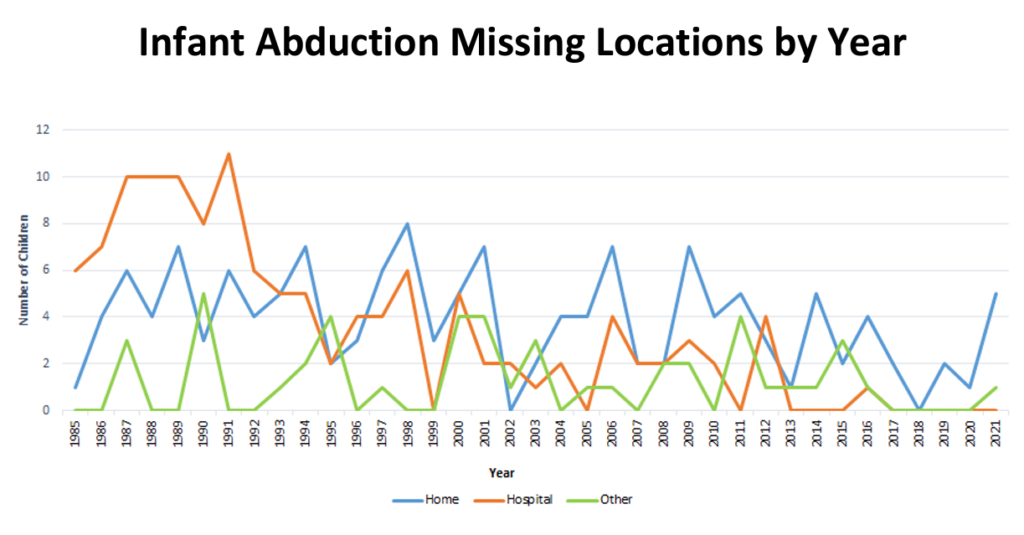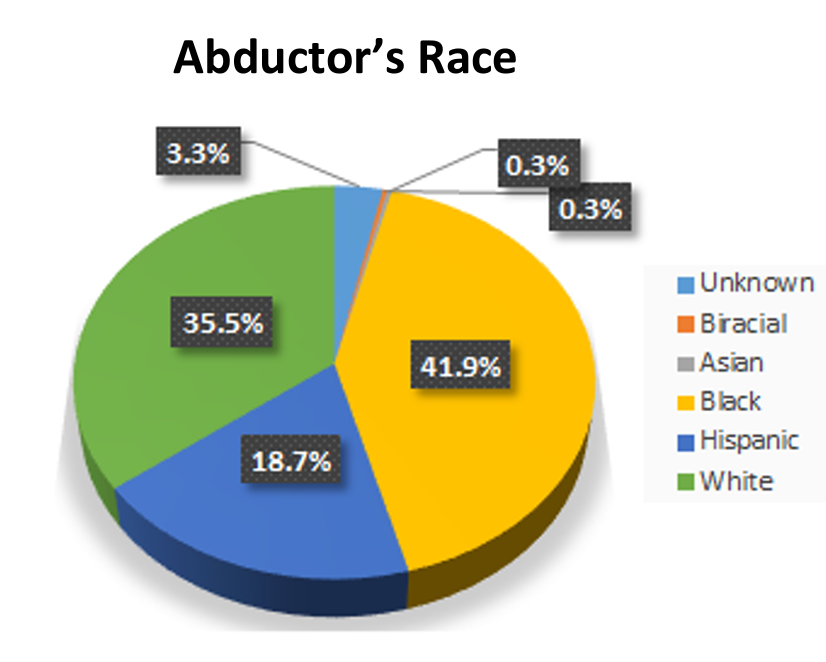Infant Security in Hospitals: How Hospitals Can Protect Infants
Over 40% of infant abductions take place in a healthcare facility, according to a nationwide data analysis by the National Center for Missing & Exploited Children between the years of 1964 and 2021. While the data supports a terrifying reality, there are many ways to ensure infant security in hospitals.
Many solutions are available on the market that actively stop and prevent newborn abductions. RF Technologies, a market innovator and trusted provider of infant security, provides high-tech, fool-proof solutions that combat abductions.



Current Methods for Infant Security in Hospitals
Currently, many hospitals rely on antiquated security measures.
These include locked doors, access control cards, and security guards that monitor areas of concern and door access. With unfettered access, doorways create opportunistic vulnerabilities that are easily bypassed when an employee uses an access card to enter or exit a ward. Access control cards are also easily hacked and stolen by those with malicious intent. While security guards are strong physical and visual deterrents, they are costly to employ and can only monitor one location at a time. During shift change, and other times they may be away from their post, leaving vulnerabilities open. Not all hospitals will also have budgets for numerous guards.
Other archaic safety protocols include:
Handwritten Bands:
Matching bands with identification details are placed on parent and baby at time of birth. The bands verify each time an infant enters or exists a room to ensure that caregiver and child correspond.
Cameras:
Maternity unit security includes surveillance cameras, as well as, limited entry and exit points for any visitors. For security purposes, hospitals maintain the right to deny entrance to any person at a patient’s request. Additionally, visitors must wear a visible badge that includes the name and details of the patient they intend to visit.
Pictures:
Hospitals keep a picture of every baby on file for identification purposes.
Badges:
Staff wear badges that grant entrance and egress from the maternity unit and signify their role.
Check-In Station:
Stationed outside, at the maternity unit front desk, is a person that monitors anyone who tries to enter or exit. A visitor must know the details of a patient’s full name, state their relationship and be verified before entering. Previously, strangers were able to view newborns through a large bay window. Subsequently, hospitals no longer allow random viewing, and most units are now “baby-friendly,” meaning the infant never leaves the room that the mother is located in.
Meanwhile, many blogs outline other outdated measures, as stated above, as ways to boost hospital security. Accordingly, the blogs lament that alarm systems and emergency plans are cutting-edge approaches to bolstering the security infrastructure. However, these solutions are flawed. While these systems provide some security, there are other more effective, fool-proof solutions that prevent infant abduction.
Advantages of Infant Security Systems from RF Technologies

RFT’s SAFE PLACE system is a tried and true infant security platform optimized to run on up-to-date software. The system is designed with modern user-experience principles and state-of-the-art coding tools. The platform’s sole purpose is infant security versus other systems that offer it as a feature added to another application.
Smart Sense Cut-Band Technology
SAFE PLACE bands feature Smart Sense Technology with cut-band protection. The RFT SMART PLACE ankle transmitter band is tamper-proof, fully adaptable and comfortable for any infant.
Umbilical Cord Transmitting Technology
RFT also offers an Umbilical Cord Transmitter as an alternative authenticating measure. No proprietary banding is required, the umbilical transmitter attaches to any standard umbilical cord clamp. It immediately communicates and is fully waterproof.
RFT is proud to work closely with labor and delivery nurses to ensure that workflow and user experience is at the pinnacle of optimization. Further, through the use of focus groups, RFT garners feedback used to perfect SAFE PLACE products, streamline the addition and discharge infants, creation of initial records, and performance of other actions.
From start to finish, SAFE PLACE products are designed around efficiency, infant security, and adaptability to each hospital setting. Thus, SAFE PLACE keeps newborns safe and your hospital’s reputation secure.
Other Infant Security Systems
Other systems currently available treat infant security as an add-on to other offered applications or as an afterthought. Not at RF Technologies. All in all, the inefficiencies that plague other infant security systems, in workflow and user experience, create reliability blind spots in the security of the product.
Also, other infant security systems run their apps and programs on Wi-Fi. While Wi-Fi appears modern and logical at first glance, it opens the infant security system as a potential hack point. Additionally, limited Wi-Fi access points and unreliable signal strength can lead to poor location pinpointing.
RF Technologies uses a closed network for all infant security functions.
In addition, other security systems use obsolete software, sometimes as old as Windows 95/98, as the underlying source code. Unfortunately, Microsoft no longer supports these operating systems. Consequently, these older operating systems provide huge security concerns and vulnerabilities as they are legacy technologies. Meanwhile, this leads to higher risk for infants, patients and health care staff.
Infant Security in Hospitals Next Steps
Every hospital administrator and security team should scrutinizingly review their security protocols. Accordingly, many already have security or safety committees in place. These committees identify vulnerabilities, weigh the cost of tech service, and analyze technology products function.
RF Technologies SAFE PLACE is a trusted solution in the business of life safety. Particularly, we strive and excel at providing patients and staff with the peace of mind that their newborns are safe and secure. RFT has protected countless infants since 1993 and we are continuously innovating to stay ahead of threats. To learn more about our product options, and to compare how they stand up against competitive products, please visit our site:
Looking for a Demo?
Request a Free in-person or virtual Product Demo to experience SAFE PLACE Infant Security for yourself.
About RF Technologies: RFT is a turn-key manufacturer and provider of life safety solutions for the senior living, healthcare, education, and hospitality markets. With 10,000+ installations since their founding in 1987, RFT is a collaborative partner in designing custom-configured solutions that meet each customer’s needs and reduces their liabilities. The RFT family of solutions includes CODE ALERT® nurse call and wander management, SAFE PLACE® patient security and staff protection, HELP ALERT® staff duress, SENSATEC® fall management products and EXACTRACK® equipment location.
Questions? Contact Marketing at marcomm@rft.com
